Bottom Bracket Standards and Terminology
Bottom Bracket Standards and Terminology
Over the years, the bicycle industry has created numerous bottom
bracket standards. Unfortunately, the industry has not been clear and
consistent when creating terms and names for them, sometimes creating
several names for the same bottom bracket standard. This article will
review the many bottom bracket standards on bicycles.
Introduction
The bottom bracket is held inside the part of the frame called
the bottom bracket shell. With use, the bearings will wear out and
require replacement.
Replacement part compatibility can be a
complex issue. When in doubt, check with the bike manufacturer, the
component manufacturer, or local bicycle repair professional to obtain
the correct parts.
There are two basic bottom bracket systems in use: “threaded” bottom brackets and “press fit” bottom brackets.
Threaded Shells
Threaded bottom brackets use a shell with internal threads to
hold threaded parts. The frame shell may be threaded directly at the
shell, or there may be an insert installed that has internal threads.
For a review of tool selection for bottom bracket service, see Bottom Bracket Tool Selection: Threaded and Thread-Thru.
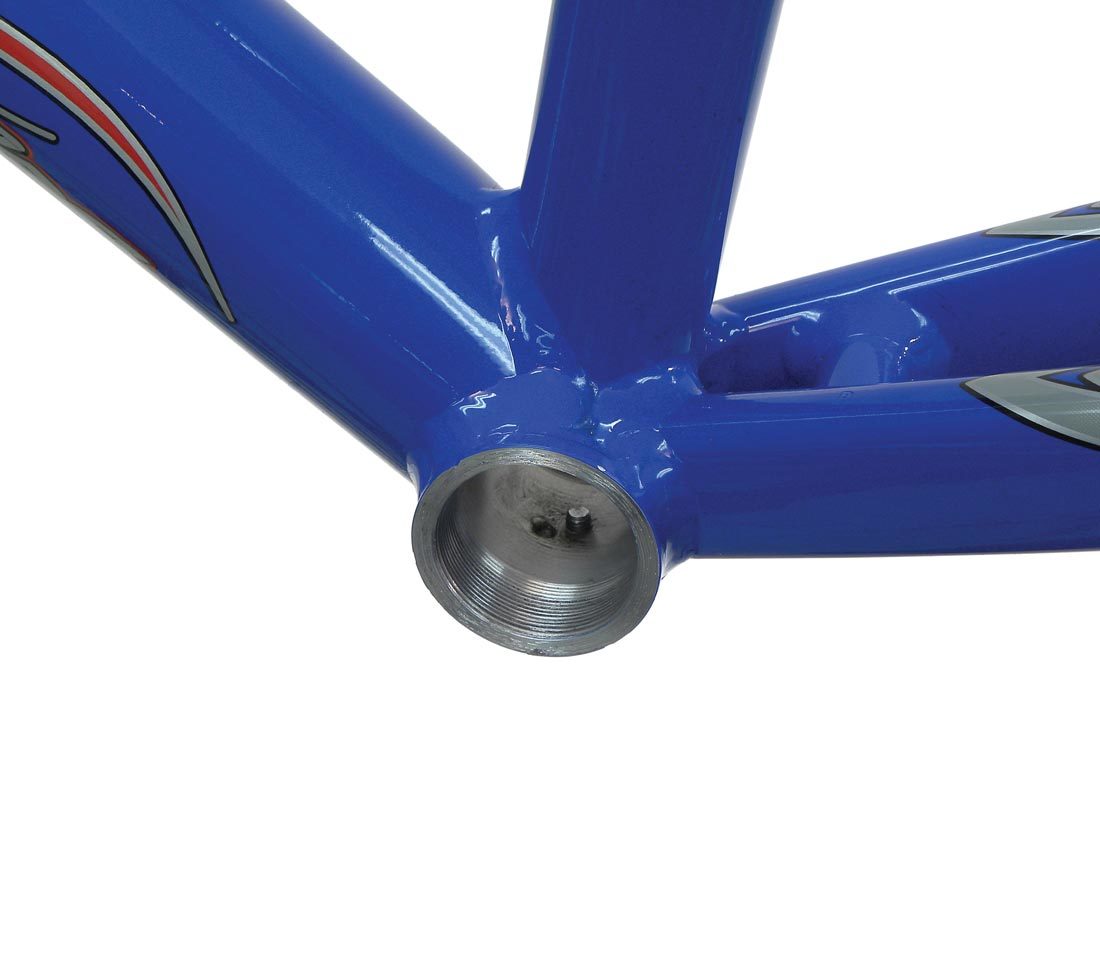
Threaded bottom brackets shells have been made over time in various thread standards that are not interchangeable. The common threaded bottom bracket uses cups or adaptors with the thread specification of 1.37″ x 24 threads per inch (approximately 34.8mm diameter). The most commonly used term for this standard is “English” threading, sometimes abbreviated as ENG.
The non-drive side (left side) on the English standard is a right hand threading, tightening clockwise. The drive side (right side of the bike) uses a left hand thread, tightening counterclockwise. The shell inside diameter will be approximately 33.7mm.
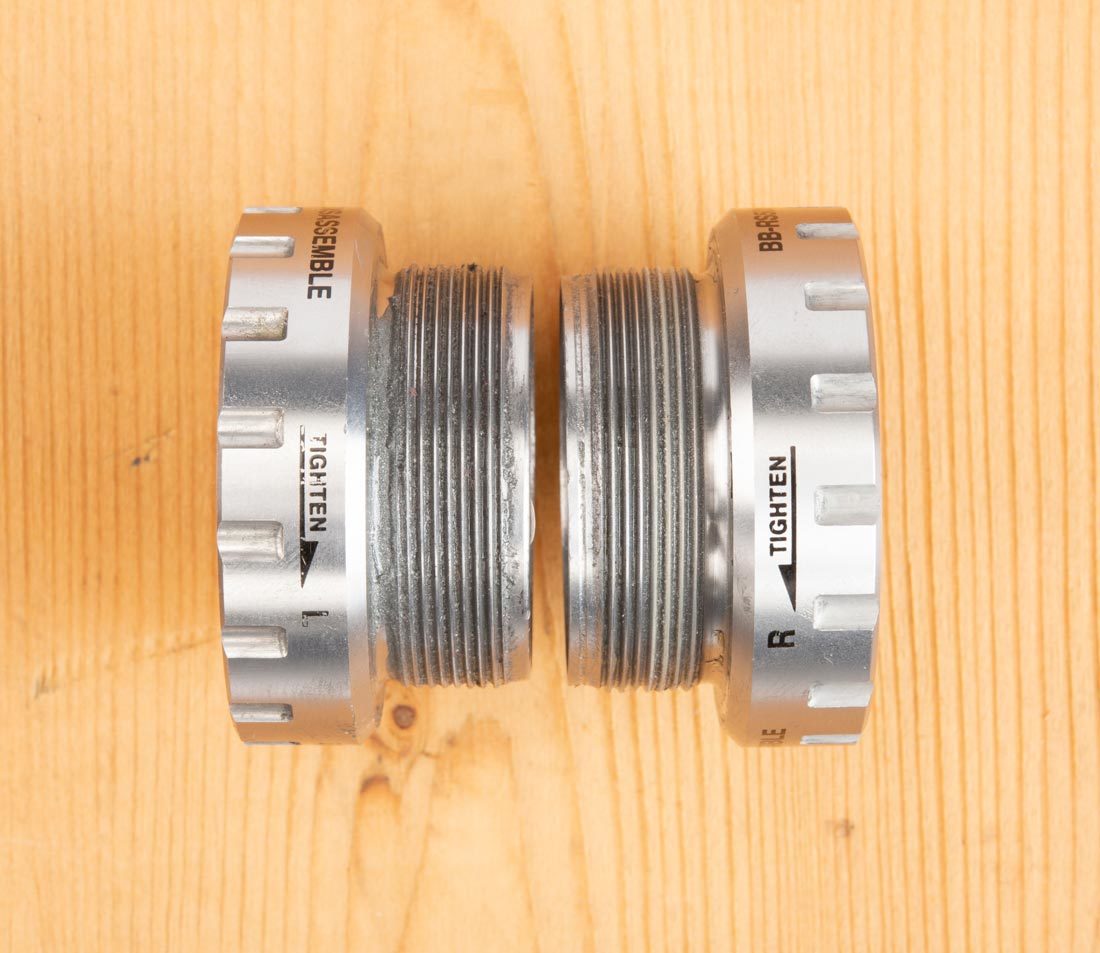
This standard also goes by other names, but they all mean the same thing. These are: BSA, BSC, BC, ISO, British, and Euro, the name used in BMX bike circles. The term BSA stands for Birmingham Small Arms, a British company that produced bicycles, cars and other durable goods. The term BSC stands for British Standard Cycle, which adopted the same standard. BSC is sometimes shortened to BC. The term ISO is refers to the International Standard Organization, an international standards organization, which also adopted this same standard to be the ISO standard.
Other
less common threading standards such as ISIS Overdrive, Italian,
French, Swiss and others are discussed later in this article.
T47 Threaded Shells
A larger thread standard is referred to as T47.
The cup’s threading is 47mm diameter x 1mm pitch. Similar to the ISO or
ENG standard, the non-drive side is a right hand threading, tightening
clockwise. The drive side is a left-hand thread, tightening
counterclockwise.
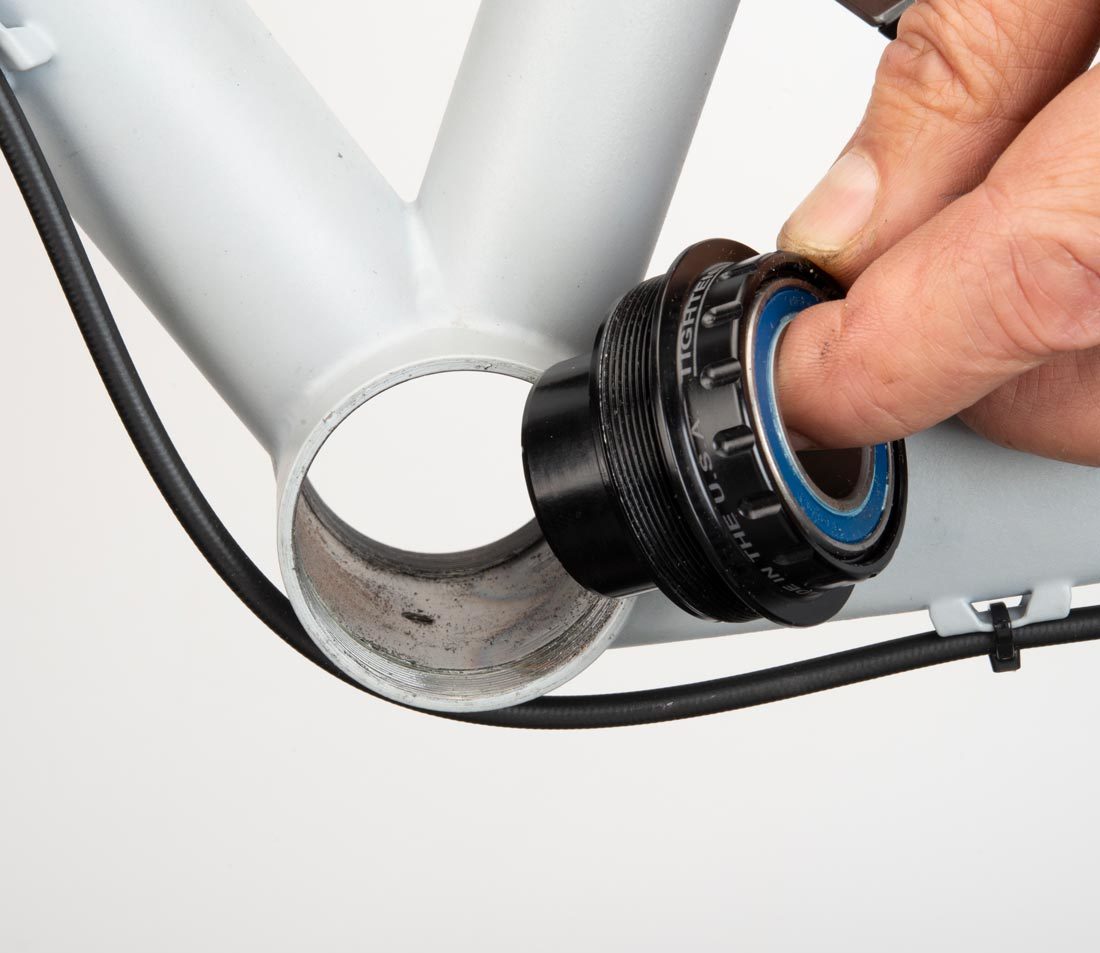
The T47 frame shell will have approximately a 46mm inside diameter.
Press Fit Shells
Press fit bottom bracket frame shells use a simple bore with no internal threading. The bearing or bearing cup will be slightly larger than the bore of the frame and is pressed inside the shell. This creates an interference fit, also known as a press fit. The bottom bracket is held in by the pressure created by the interference.
The terminology of press fit bottom brackets has become especially confusing. Some standards were named for the spindle diameter, others were named for the shell width, and still other terms came from the size of the bore where the press fit occurs. Because the frame shell bore diameter is the only consistent and most important part of the press fit system, the bore size is the preferred system and will be used here.
PF41 (also known as BB86, BB89.5, BB92, BB107, BB132, Shimano® Press-Fit, PF24)
Shells of the PF41 standard have a smooth bore with a nominal 41mm inside diameter. Other terms for this press fit standard include BB86, BB89.5, BB92, BB107, BB121, BB132, PF24 and Shimano® Press-Fit. The numbers numbers ranging from 86 to 132 refer to the nominal width of the shell in millimeters, which is not related to the press fit of the bearings. These bottom brackets will vary in the width of the dust sleeve used for that different widths.
The term “Shimano® Press-Fit” refers to the company that developed bottom bracket components in this standard. The term PF24 is for bearing adapters fitting a 24mm spindle that use a 41mm bore frame.
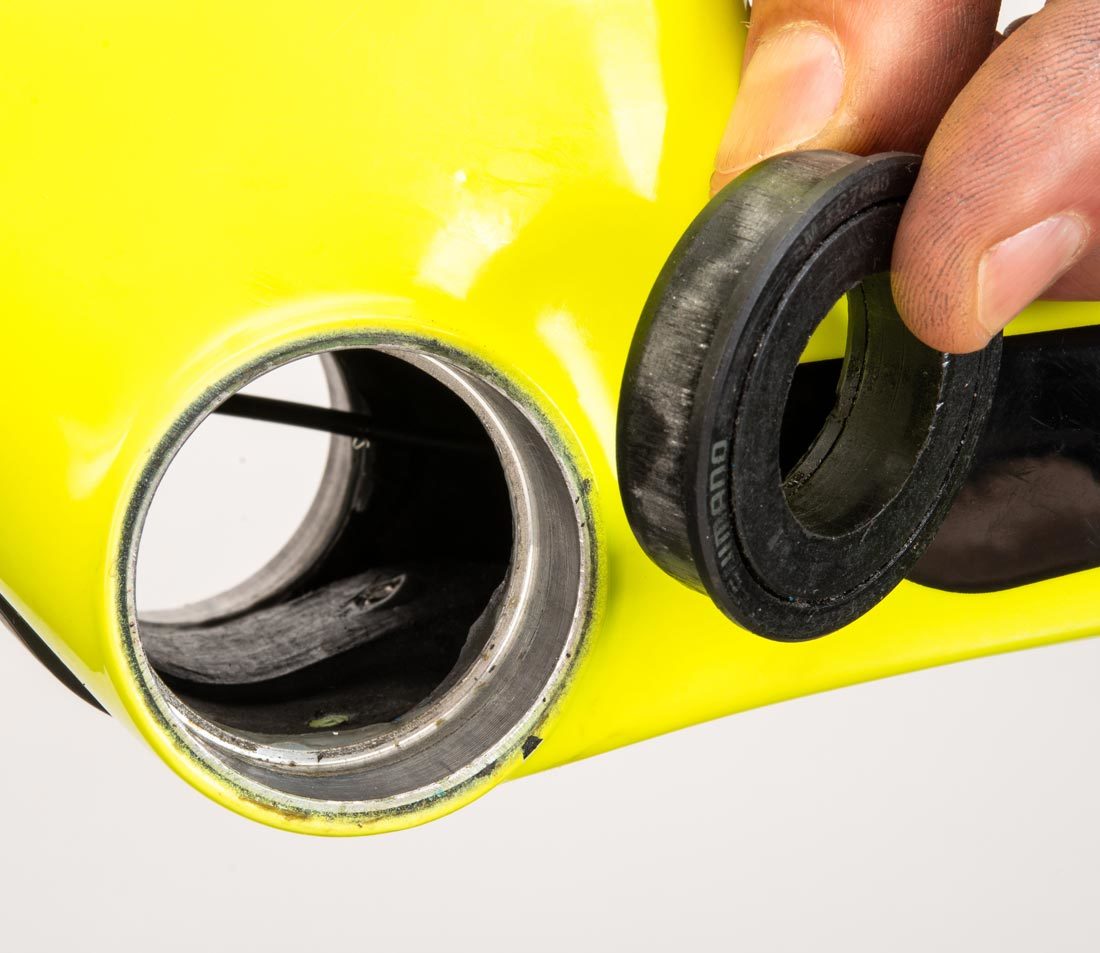
The PF41 press fit standard is available with several bearing inside diameters for various crank spindle systems, such as 24mm, 28.99mm, 30mm, and the stepped 22/24mm.
PF42 (also known as BB30, BB30a, BB30ai, BBright™ Direct Fit)
The term PF42 refers to the inside diameter of the shell. The term BB30 was an early term in the history of this standard and refers to the 30mm diameter of the spindle used at that time. However, bottom bracket bearings are available in this standard for 28.99mm, 24mm and 22/24mm spindle systems. The only commonality amongst these different terms is the 42mm nominal press fit dimension.
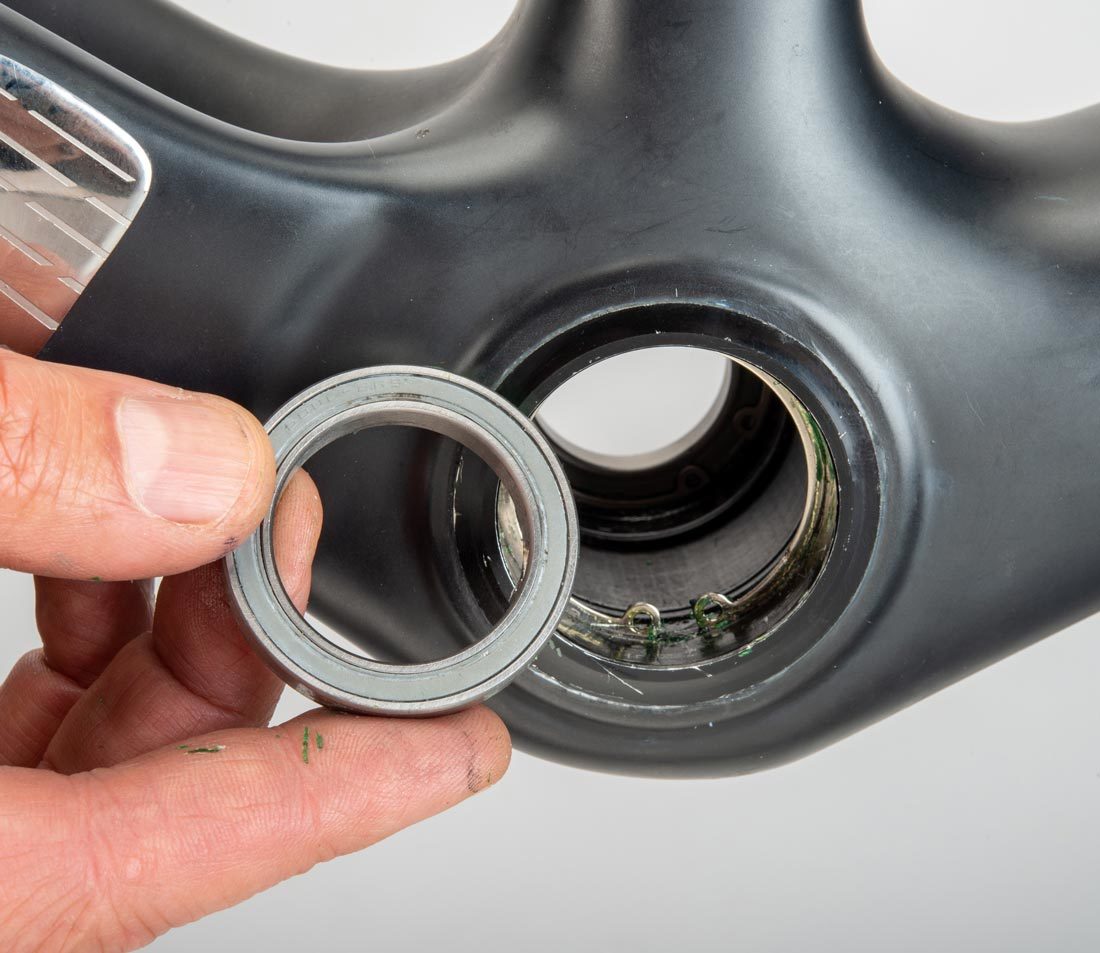
The terms BB30a, BB30ai, and BBright™ Direct Fit refer to asymmetrical shell width designs, which does not effect the press fit of the adaptors to the bike.
PF46 (also known as PF30, PF30a, PF30ai, BB386EVO, OSBB, BBright™ Press Fit)
The term PF46 refers to a frame shell bore of 46mm. The term PF30 is an early industry name used to distinguish this standard from the previous BB30 (PF42) standard. The frame shell has a smooth bore with an approximately 46mm inside diameter. The shell widths range in width from 68mm to 86mm. The cartridge bearings of the PF46 system use an adaptor of plastic or aluminum and are pressed into the bottom bracket shell. Bearing adaptors are made to fit different crank spindle diameters, such as 22/24mm, 24mm, 28.99mm, and 30mm.
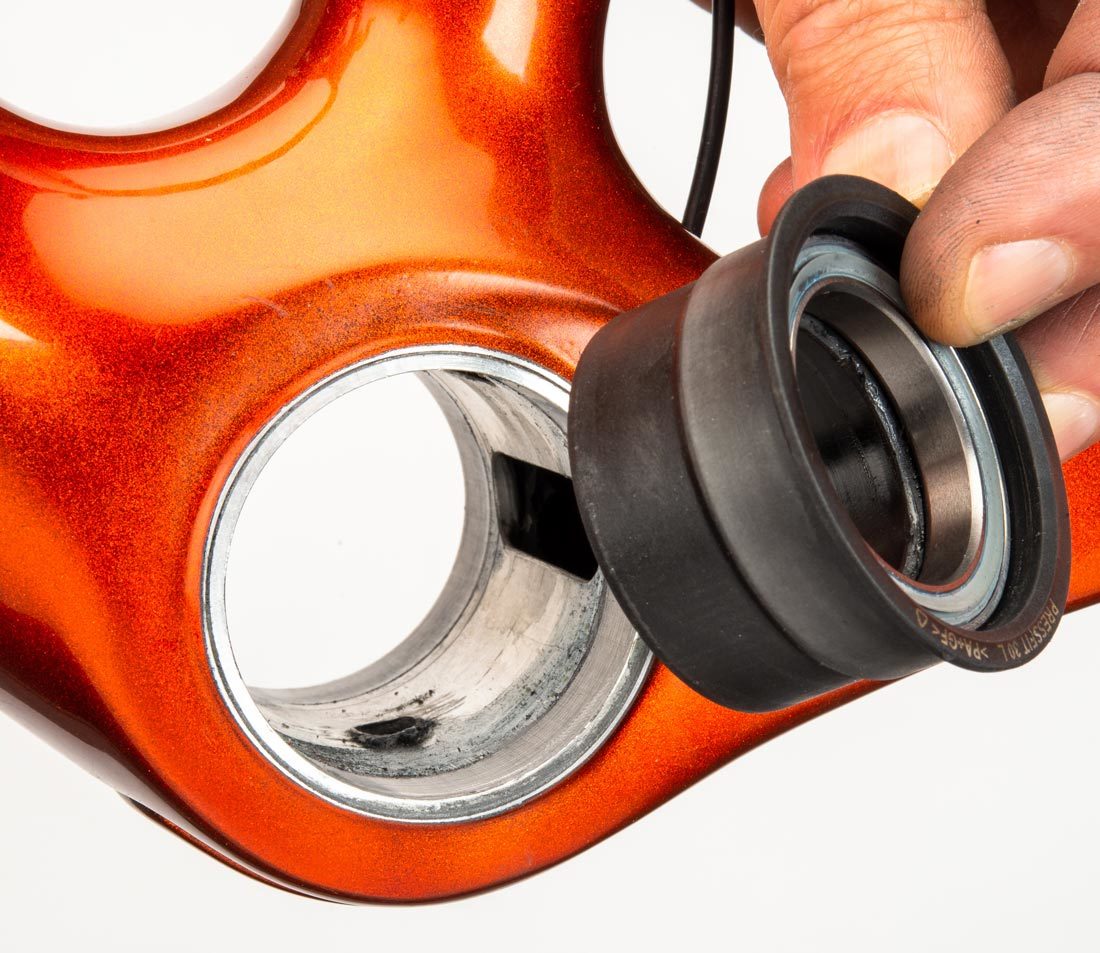
The terms PF30a, PF30ai, and BBright™ Press Fit refer to asymmetrical shell width designs and do not change the press fit of the adaptors to the bike.
BB90 and BB95
BB90 and BB95 are proprietary standards used by the Trek® Bicycle Company. The numbers 90 and 95 refer to nominal shell width. This unique bottom bracket shell is not a straight bore but has an internal bearing retainer built into the shell, similar to an integrated headset. Bearing outside diameters are 37mm.
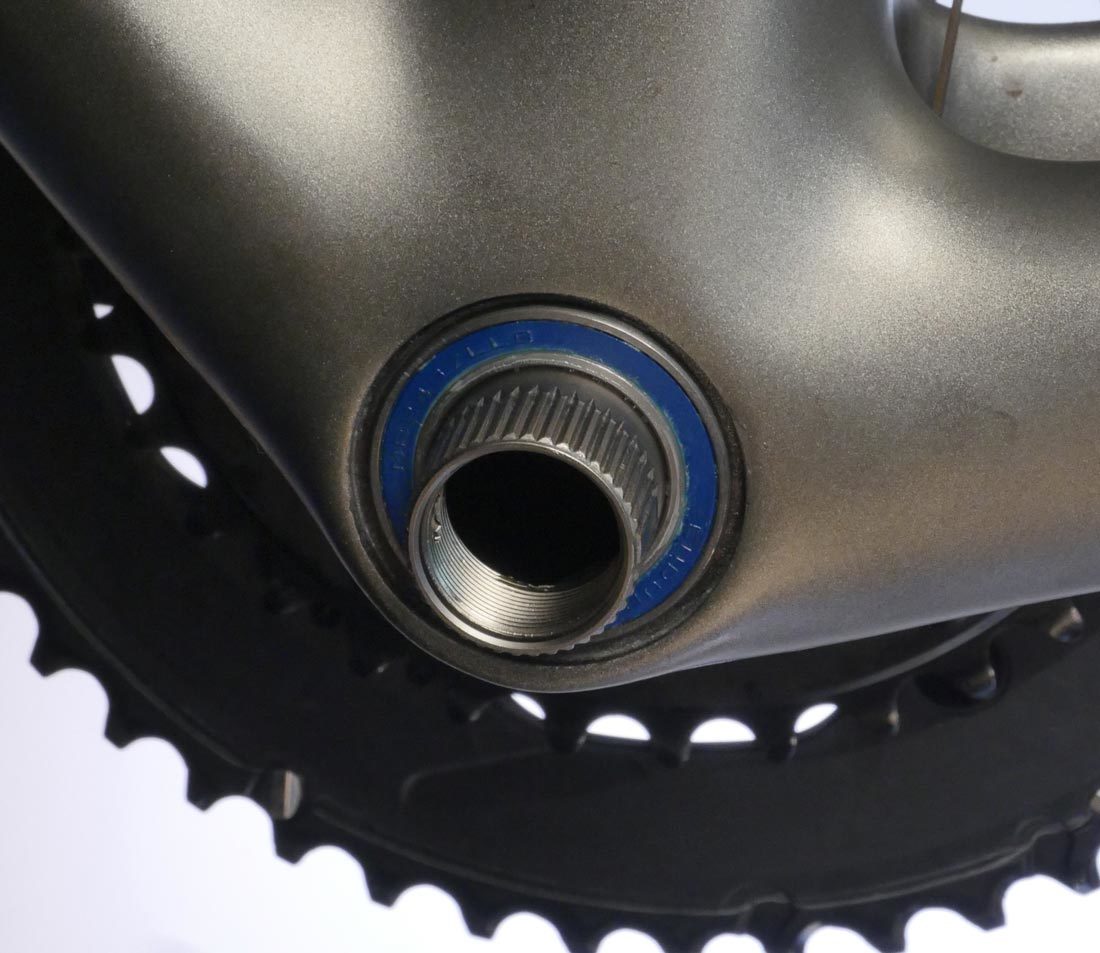
Trek® BB90 bottom bracket shell
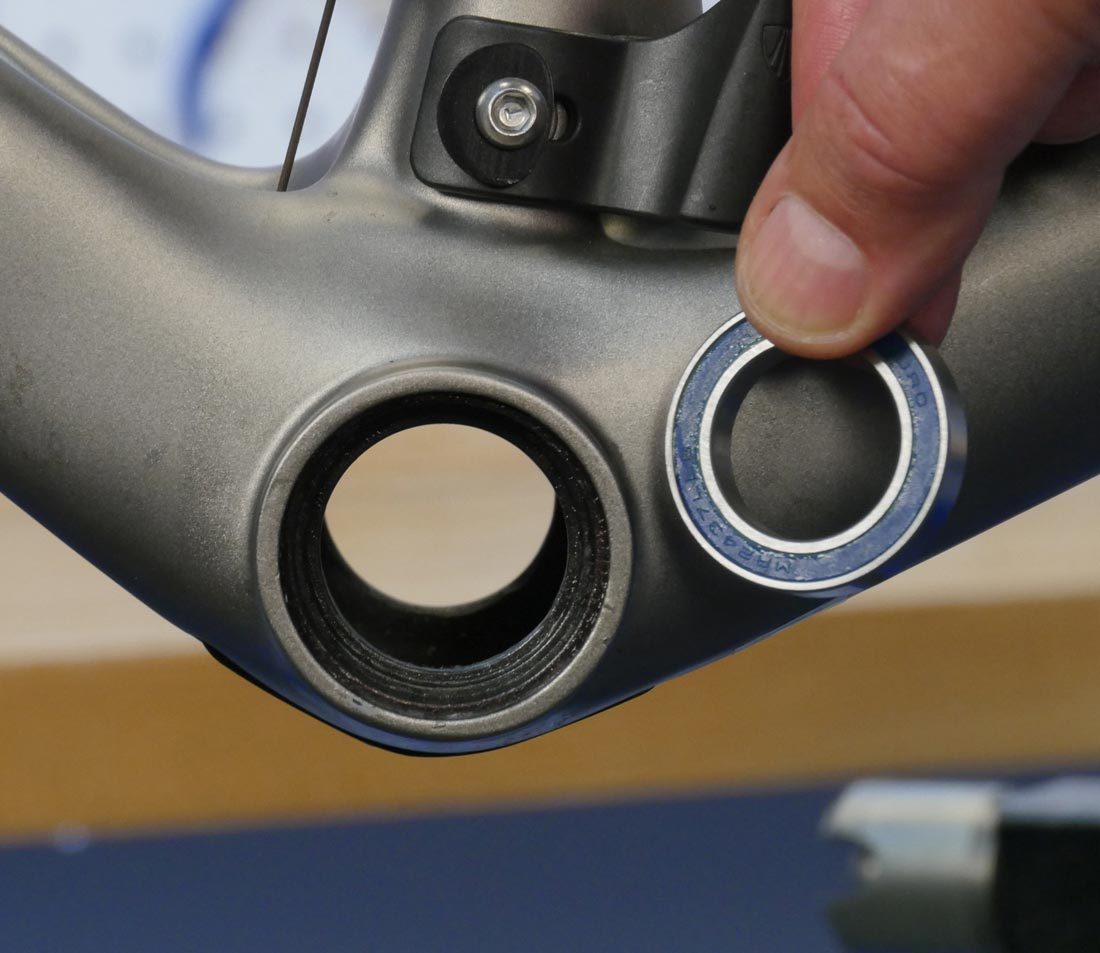
BB90 shell and bearing with spindle and bearing removed.
Spanish Press Fit
Spanish Press Fit is a BMX standard. The frame bore is nominally 37mm.
Spindle ODs may be either 19mm or 22mm. There is no adaptor or cup and the bearing is pressed directly into the frame.
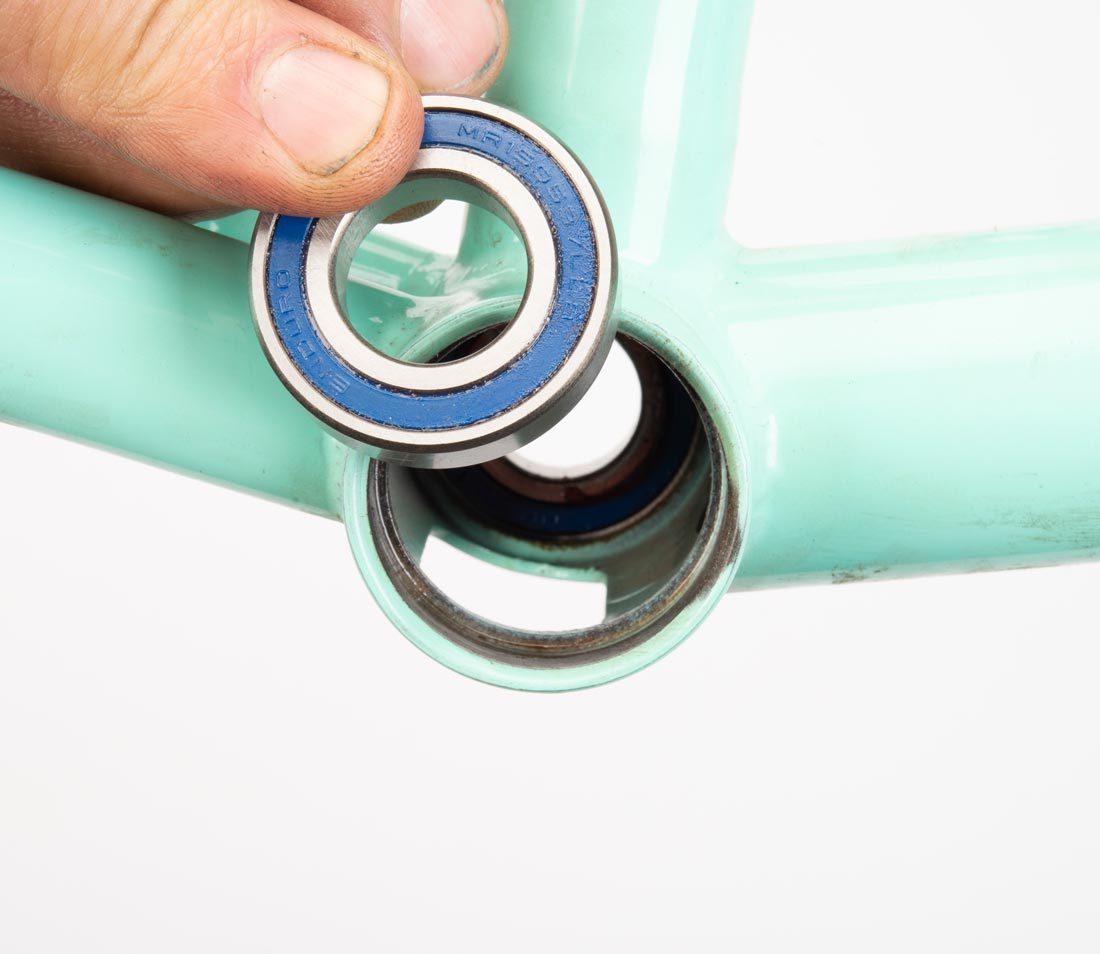
Mid Press Fit
Mid Press Fit is another BMX standard. It uses a 41.2mm (1-5/8″) diameter cartridge bearing. Like the Spanish standard, the bearing is pressed directly into the frame.
American (Ashtabula)
The American, or Ashtabula, standard uses a 51.5mm cup pressed into the frame. It is seen on older Schwinn® bicycles, some BMX bicycles, and various bikes at a lower price point. Another term for this system is the “one-piece crankset.”
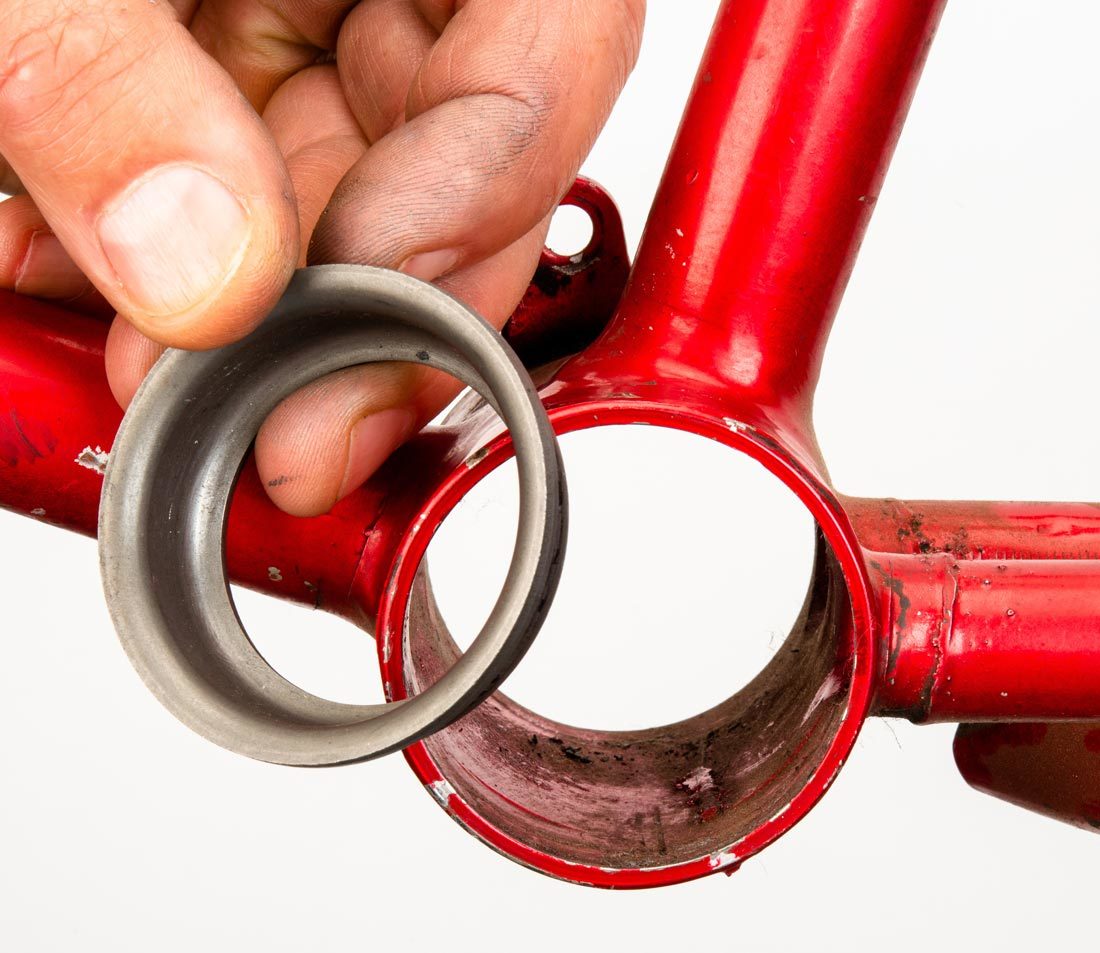
There are adaptors that can be used to downsize the large bore of the shell to use threaded English bottom brackets, as well as the BMX Mid and Spanish standards.
Less Common Threaded Shells
ISIS Overdrive
Seen now primarily on exercise equipment, the ISIS Overdrive standard has thread of 48mm x 1.5mm. The drive side is a left hand thread and the non-drive side is a right hand thread.
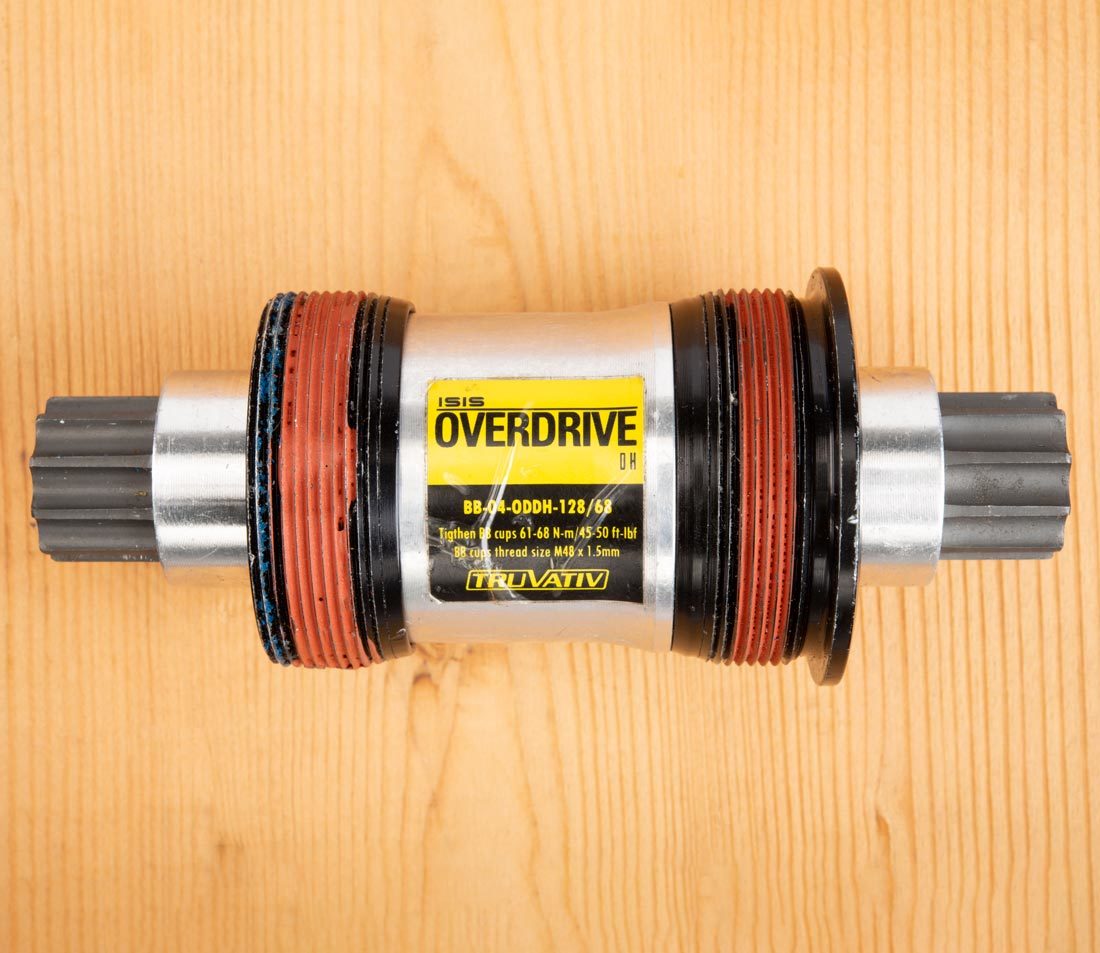
The inside diameter of the shell is approximately 46.5mm. The crank-to-spindle interface will be the ISIS spline interface.
Italian Standard
The Italian Standard uses a threading of 36mm x 24 threads per inch. Both sides of the bottom bracket are right hand threaded. Parts in the Italian standard are usually marked as such. Not all Italian-made bikes use Italian Standard threading.
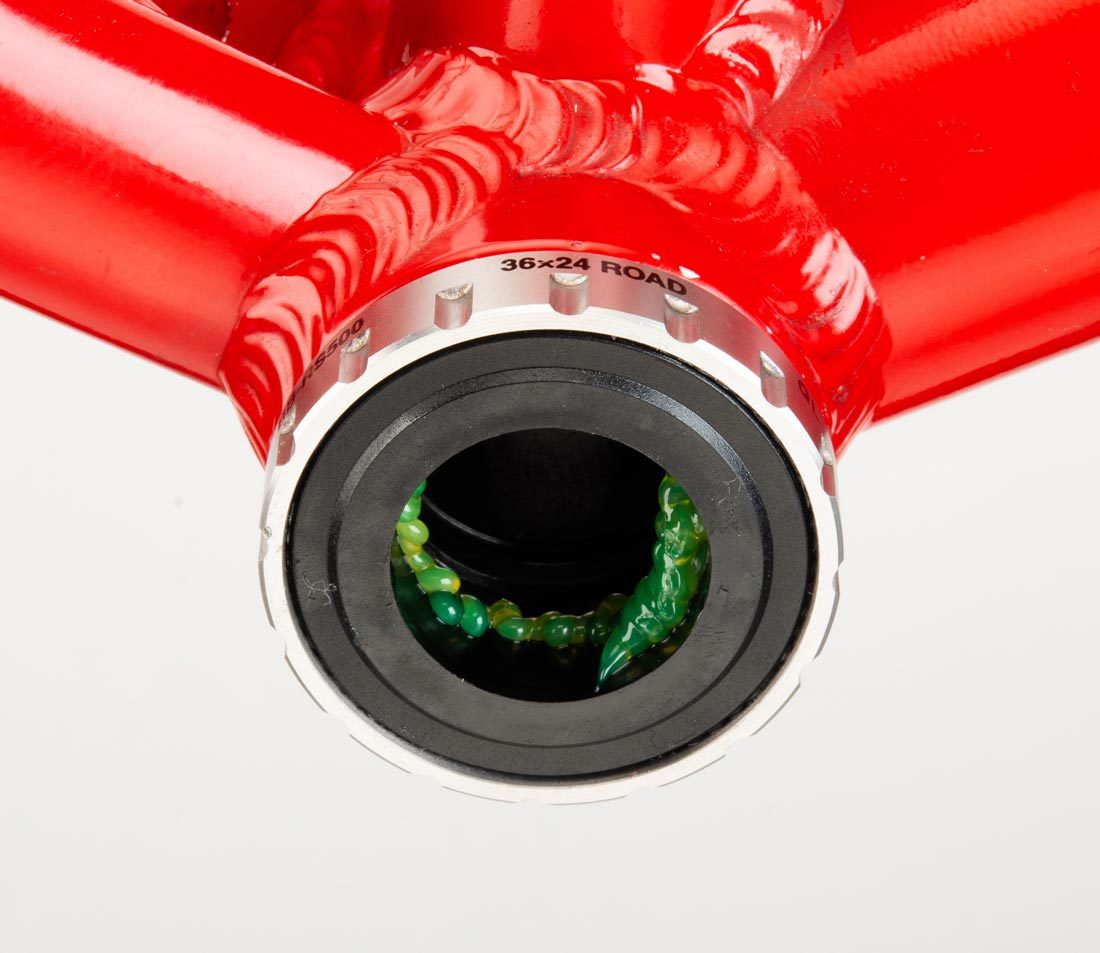
Frames in this standard can be distinguished by a 35mm inside diameter.
French Threading
The French threading standard is now considered obsolete. It uses a 35mm x 1mm pitch. Both non-drive and drive side cups use a right hand threading. The shell inside diameter is approximately 34mm. Not all French-made bikes use French Threading.
Swiss Threading
Also considered obsolete like the French threading, the Swiss Threading standard uses 35mm x 1mm pitch. However, the non-drive side uses a right hand threading and the drive side uses a left hand threading. The shell inside diameter is approximately 34mm. Not all Swiss-made bikes use Swiss Threading as a standard.
Raleigh 3-Speed
This is an older and obsolete threading standard seen primarily on 20th century English 3-speed bikes. Threading size is 1.37″ x 26 tpi. The drive side uses left hand threading. Do not confuse this with the common English threading, which uses a 24 tpi threading. The two systems are not interchangeable.
Comments
Post a Comment